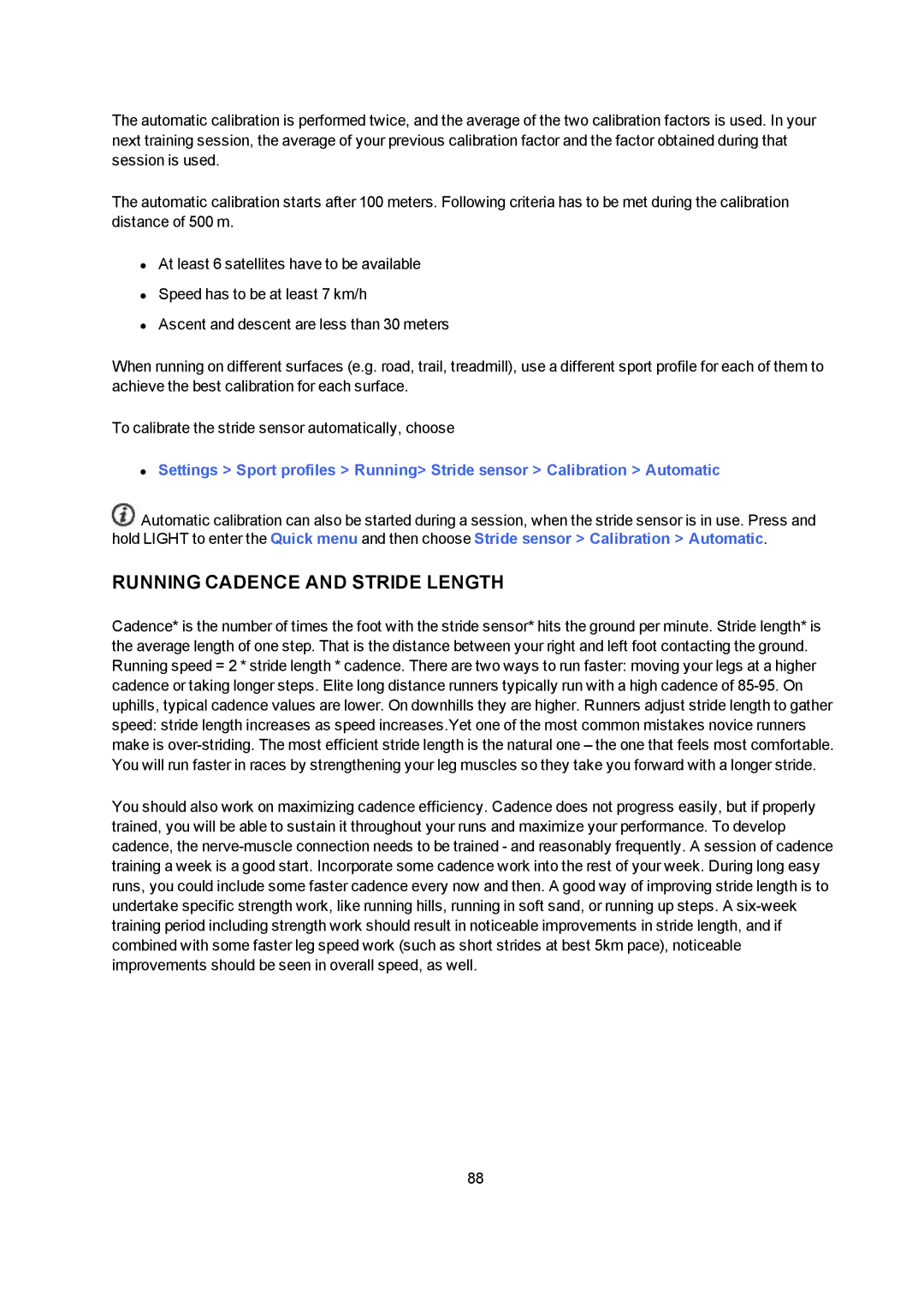The automatic calibration is performed twice, and the average of the two calibration factors is used. In your next training session, the average of your previous calibration factor and the factor obtained during that session is used.
The automatic calibration starts after 100 meters. Following criteria has to be met during the calibration distance of 500 m.
•At least 6 satellites have to be available
•Speed has to be at least 7 km/h
•Ascent and descent are less than 30 meters
When running on different surfaces (e.g. road, trail, treadmill), use a different sport profile for each of them to achieve the best calibration for each surface.
To calibrate the stride sensor automatically, choose
•Settings > Sport profiles > Running> Stride sensor > Calibration > Automatic
![]() Automatic calibration can also be started during a session, when the stride sensor is in use. Press and hold LIGHT to enter the Quick menu and then choose Stride sensor > Calibration > Automatic.
Automatic calibration can also be started during a session, when the stride sensor is in use. Press and hold LIGHT to enter the Quick menu and then choose Stride sensor > Calibration > Automatic.
RUNNING CADENCE AND STRIDE LENGTH
Cadence* is the number of times the foot with the stride sensor* hits the ground per minute. Stride length* is the average length of one step. That is the distance between your right and left foot contacting the ground. Running speed = 2 * stride length * cadence. There are two ways to run faster: moving your legs at a higher cadence or taking longer steps. Elite long distance runners typically run with a high cadence of
You should also work on maximizing cadence efficiency. Cadence does not progress easily, but if properly trained, you will be able to sustain it throughout your runs and maximize your performance. To develop cadence, the
88
